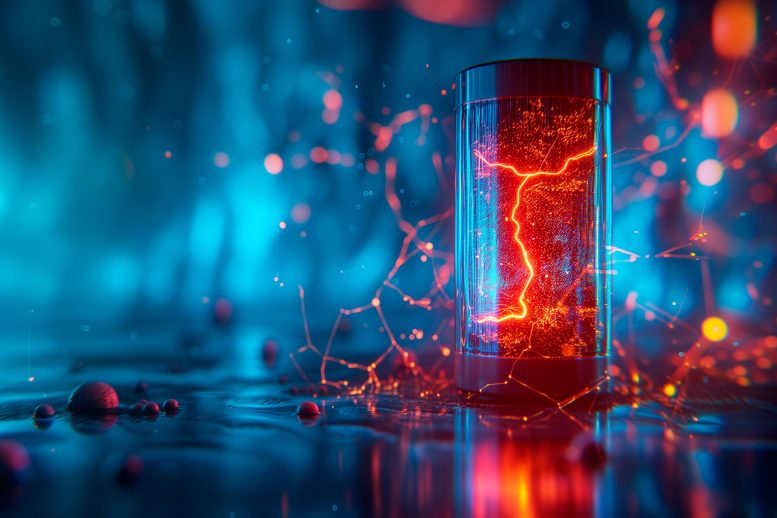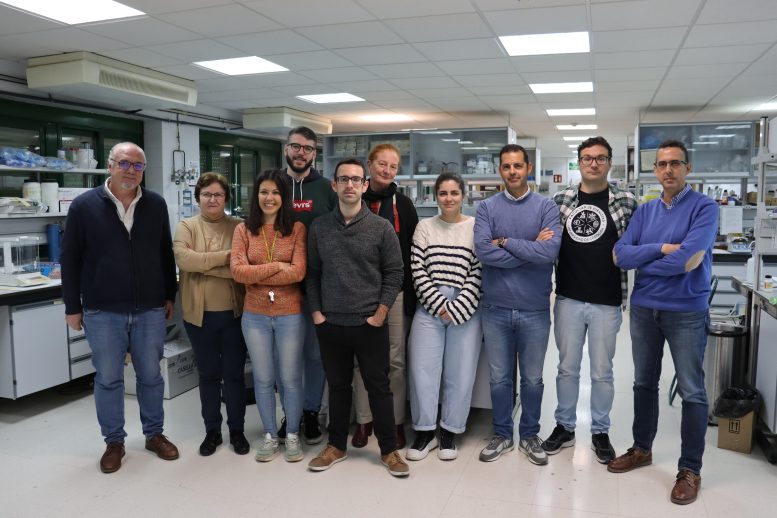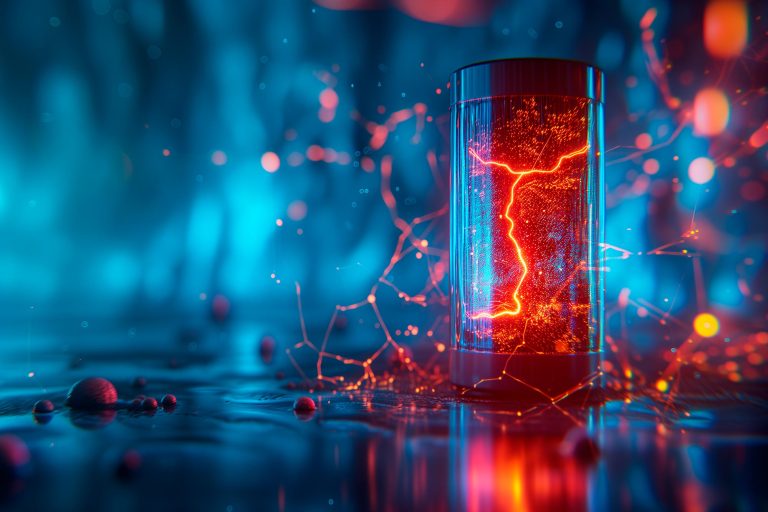
Researchers at the University of Cordoba, in collaboration with other institutions, have developed a new type of battery using hemoglobin as a catalyst in zinc-air batteries. This biocompatible battery can operate for up to 30 days and offers several advantages, such as sustainability and suitability for use in human body devices. Despite their non-rechargeable nature, this innovation represents an important step towards environmentally friendly battery alternatives, addressing the limitations of current lithium-ion batteries. (Artist's concept.) Credit: SciTechDaily.com
Researchers at the Chemical Institute of Energy and Environment (IQUEMA) at the University of Cordoba have developed a battery that uses hemoglobin to facilitate electrochemical reactions, maintaining functionality for approximately 20 to 30 days.
Hemoglobin is a protein found in red blood cells that is responsible for transporting oxygen from the lungs to various body tissues (and then transporting carbon dioxide in the opposite direction). It has a very high affinity for oxygen and is essential for life, but what if it is also an essential element for some kind of electrochemical device in which oxygen also plays an important role, such as zinc-air batteries?
This is what the group of Physical Chemistry (FQM-204) and Inorganic Chemistry (FQM-175) at the University of Cordoba (UCO) wanted to investigate and develop, in collaboration with a team from the Polytechnic University of Cartagena, following the study conducted by the research team. Oxford university A final degree project at the University of British Columbia showed that hemoglobin has promising properties for the reduction and oxidation process (redox) by which energy is generated in this type of system.

Research team of the University of Cordoba. Credit: University of Cordoba
Thus, through a proof-of-concept project, the research team developed the first biocompatible battery that uses hemoglobin in an electrochemical reaction that converts chemical energy into electrical energy.
Mechanism and advantages of hemoglobin battery
Using zinc-air batteries, one of the most sustainable alternatives to those that currently dominate the market (lithium-ion batteries), hemoglobin acts as a catalyst in such batteries. That is, it is a protein responsible for facilitating the electrochemical reaction, and it is called the oxygen reduction reaction (ORR), which, after air enters the battery, causes the oxygen to be reduced and converted into water in one of the parts of the battery (cathode or positive electrode), where electrons are released that move to the other part. of the battery (anode or cathode), where zinc oxidation occurs.
As Manuel Cano Luna, a researcher at the University of British Columbia, explains: “To be a good catalyst in an oxygen reduction reaction, the catalyst must have two properties: it needs to absorb oxygen molecules quickly, and form water molecules relatively easily. Hemoglobin met those requirements.” In In fact, through this process, the team was able to make the biocompatible battery prototype work with 0.165 milligrams of hemoglobin for 20 to 30 days.
In addition to strong performance, the battery prototype they developed has other advantages. First of all, zinc-air batteries are more sustainable and can withstand adverse weather conditions, unlike other batteries that are affected by humidity and require an inert atmosphere for their manufacture.
Second, says Cano Luna, “using hemoglobin as a biocatalyst is very promising in terms of using this type of battery in devices embedded in the human body,” such as pacemakers. In fact, the battery operates at a pH of 7.4, which is similar to the pH of blood. In addition, since hemoglobin is present in almost all mammals, protein of animal origin can also be used.
Challenges and future directions
However, the battery they developed has room for improvement. The most important one is that it is a primary battery, so it only discharges electrical energy. It is also not rechargeable. Therefore, the team is already taking the next steps to find another biological protein that can convert water into oxygen, and thus recharge the battery. In addition, the batteries will only work in the presence of oxygen, so they cannot be used in space.
The study was published in the journal energy and fuel, It opens the door to new functional alternatives to batteries in a context where more and more portable devices are expected, and where there is an increasing commitment to renewable energies, such that it is necessary to have devices that store excess electrical energy in a form of chemical energy. More importantly, today's most common battery, lithium-ion, is burdened by problems of lithium scarcity and its environmental impact as hazardous waste.
Reference: “Human zinc-air battery based on hemoglobin in a neutral electrolyte” by Valentin Garcia Caballero, Sebastian Lorca, Marta Vila Moreno, Alvaro Caballero, Juan J. Giner Casares, Antonio J. Fernández Romero, and Manuel Cano. September 25, 2023, Energy and fuel.
doi: 10.1021/acs.energyfuels.3c02513

